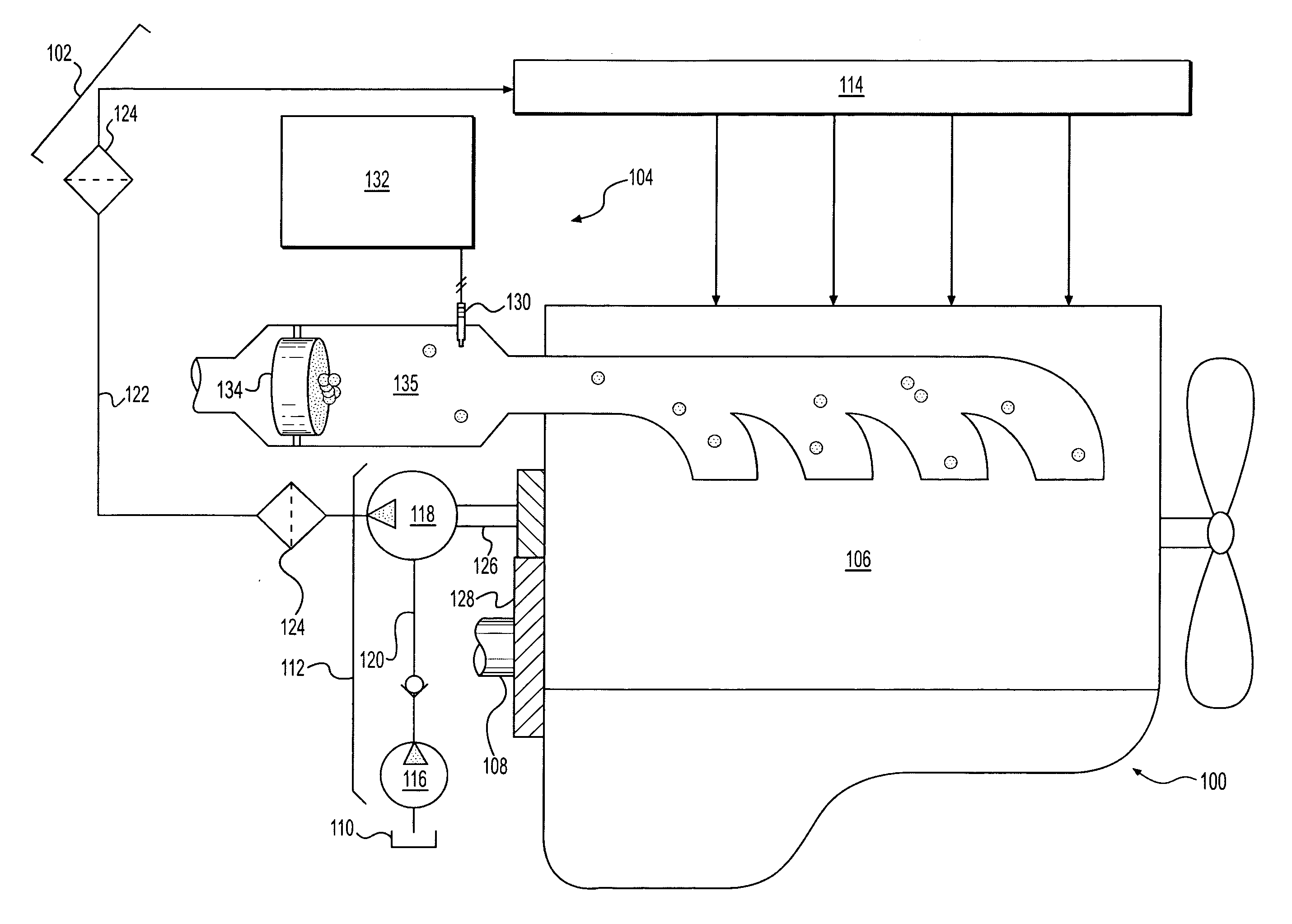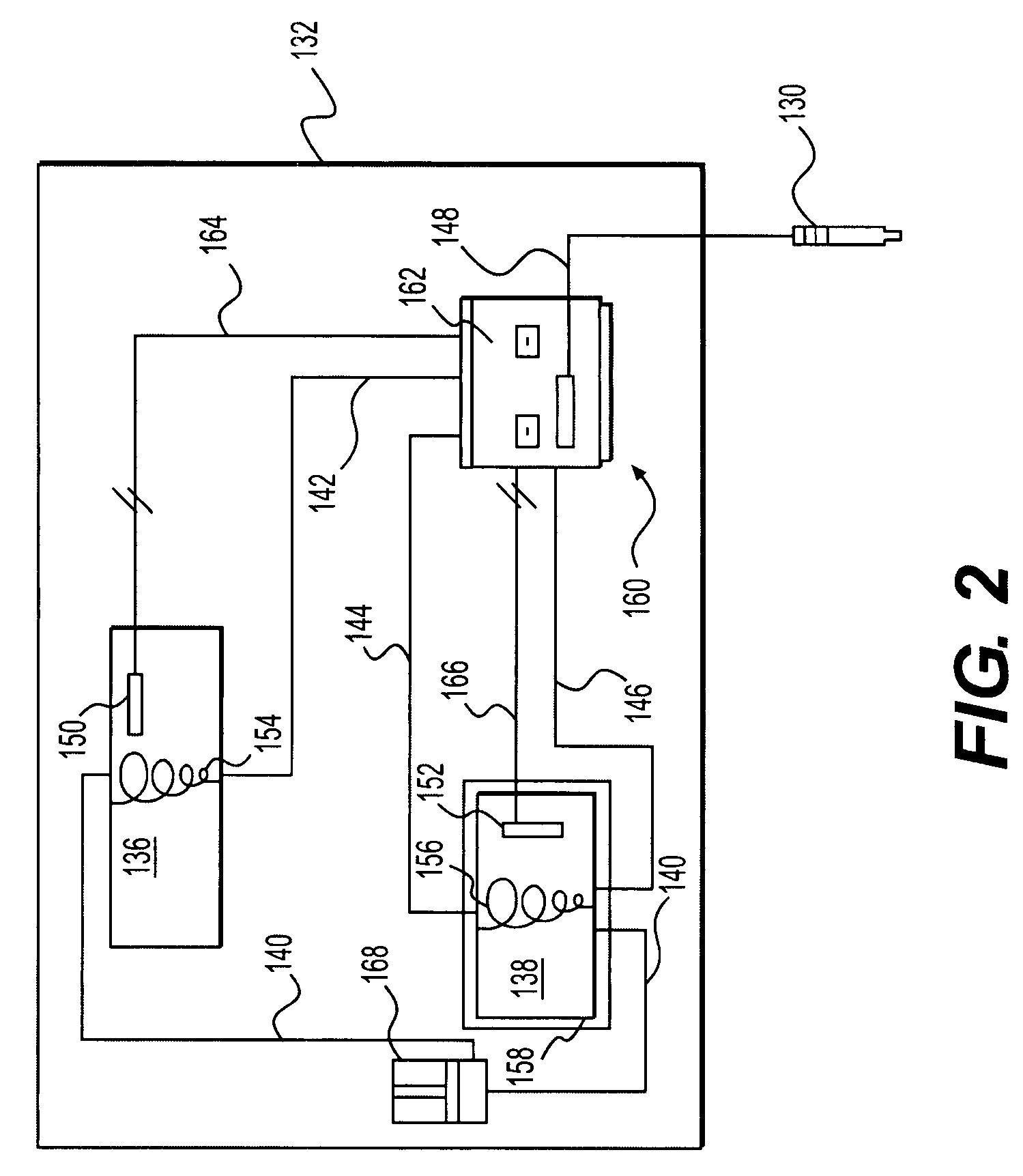Exhaust after-treatment system having a secondary tank
a technology of exhaust aftertreatment and secondary tank, which is applied in the direction of pipe heating/cooling, machines/engines, liquid transferring devices, etc., can solve the problems of thawing urea immediately, and affecting the thawing effect of reductan
- Summary
- Abstract
- Description
- Claims
- Application Information
AI Technical Summary
Benefits of technology
Problems solved by technology
Method used
Image
Examples
Embodiment Construction
[0011]FIG. 1 illustrates a power unit 100. For the purposes of this disclosure, power unit 100 is depicted and described as a four-stroke diesel engine. One skilled in the art will recognize, however, that power unit 100 may be any other type of internal or external combustion engine, such as, for example, a gasoline or a gaseous fuel-powered engine. Power unit 100 may include an engine block 106 that at least partially defines a plurality of combustion chambers (not shown). In the illustrated embodiment, power unit 100 includes four combustion chambers. However, it is contemplated that power unit 100 may include a greater or lesser number of combustion chambers and that the combustion chambers may be disposed in an “in-line” configuration, a “V” configuration, or any other suitable configuration.
[0012]As also shown in FIG. 1, power unit 100 may include a crankshaft 108 that is rotatably disposed within engine block 106. A connecting rod (not shown) may connect a plurality of piston...
PUM
 Login to View More
Login to View More Abstract
Description
Claims
Application Information
 Login to View More
Login to View More - R&D
- Intellectual Property
- Life Sciences
- Materials
- Tech Scout
- Unparalleled Data Quality
- Higher Quality Content
- 60% Fewer Hallucinations
Browse by: Latest US Patents, China's latest patents, Technical Efficacy Thesaurus, Application Domain, Technology Topic, Popular Technical Reports.
© 2025 PatSnap. All rights reserved.Legal|Privacy policy|Modern Slavery Act Transparency Statement|Sitemap|About US| Contact US: help@patsnap.com



